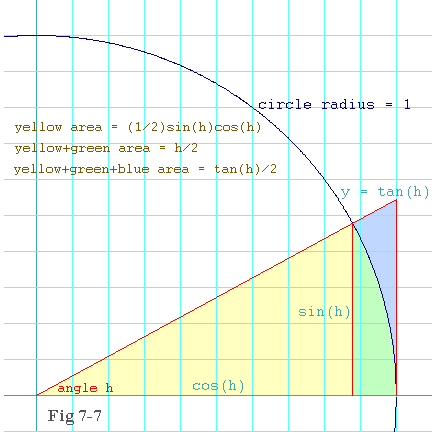


This first part of this is easy because I practically gave it away with
the hint. If you join the point,
(cos(h),sin(h)), and the point, (1,0), with a new
line segment, you form a triangle whose base is 1 and whose
height is sin(h). Hence its area is sin(h)/2.
We already saw that the area of the pie-slice (that is the combined
green and yellow areas) is h/2. And you can see that the
new triangle is entirely contained inside the pie-slice. So the
area of the new triangle must be less than the area of the pie-slice.
Therefore it must be true that
The second part was to do a delta-epsilon proof that
lim f(x) = f(0)
x > 0
In this case lim sin(x) = 0 x> 0
The delta-epsilon contract here is that for any
|sin(x) - 0| £ eor equivalently
|sin(x)| £ ewhenever
But above we just proved that when x is in the first
quadrant,
|sin(x)| < |x|whenever x is in the first or fourth quadrant. And since x is supposed to be close to zero in this problem, we can certainly make that restriction. Combining this inequality with the delta-inequality we have
|sin(x)| < |x| £ dYou can stick this into your epsilon-inequality to get
|sin(x)| < |x| £ d £ e
In other words, if you choose your d
small enough to guarantee
That means that you need only choose your d to be anything greater than zero and less than or equal to whatever e I have named, and you will satisfy the contract.
And since we've shown that sin(x) is equal to its limit at
email me at hahn@netsrq.com